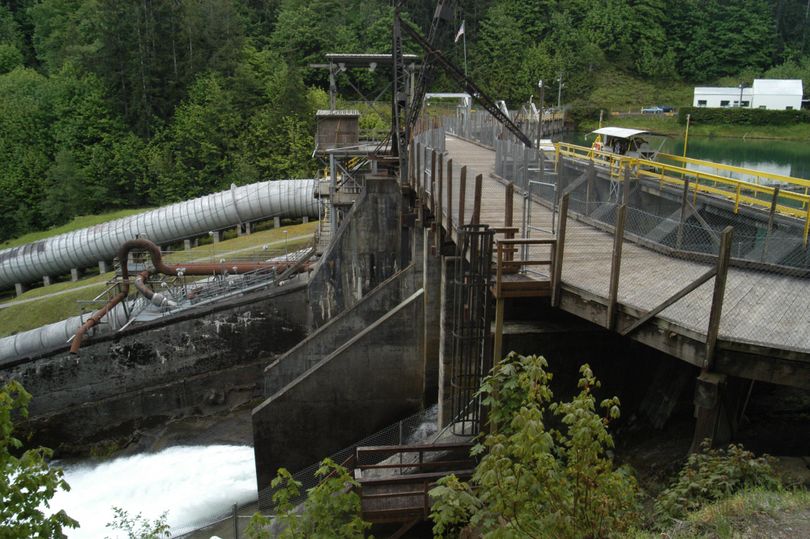New hatchery to help restore post-dam Elwha fisheries

FISHING -- Another step has been taken toward restoring the fabled steelhead and salmon runs once the dams are removed from the Elwha River near Port Angeles.
The Lower Elwha Klallam tribe’s new fish hatchery was completed May 13 and has received its first batch of steelhead fry to help replenish the river's fisheries.
The hatchery, part of the Elwha River restoration project, has 160,000 juvenile fish swimming in two of the new hatchery ponds. Many more — including pink, chum and coho salmon — are soon expected.
Following removal of the river’s two dams, which will begin in September, the tribe will release as many as 3 million fish a year throughout the 65-mile-long waterway in areas off limits to spawning salmon for nearly a century.
The tribe and National Park Service, which is heading the $327 million river restoration project, are hoping enough will return to restore the once fabled salmon runs. It’s no small task, and the tribe realizes it has few examples from which to learn.
Read on for details from the Associated Press
"I think we are really writing the book on how to do this,” said Larry Ward, tribal hatchery manager.
Only five miles of river have been available to spawning salmon since the first dam on the stream was built in 1913.
Demolition of the Elwha Dam, and its cousin, Glines Canyon Dam, will take three years to complete.
The park service has estimated salmon runs will reach 400,000 annually by 2039, much more than the 3,000 the river currently hosts each year.
Ward said he expects the runs to be restored, but he was hesitant to say how long it will take.
“We’ll just have to play it by ear,” he said.
Robert Elofson, the tribe’s natural resources director, called the new hatchery on Stratton Road “state of the art.”
Paid for by the park service, it cost $16.4 million to build and is about three times bigger than the tribe’s other hatchery, which was built in 1978.
The older hatchery will run for the next two years before being decommissioned, Ward said. That will give enough time for spawning salmon released last year to return.
Ward said he expects the new hatchery also will be decommissioned once the runs are restored.
In the meantime, the tribe will continue to relocate its juvenile fish and eggs to the new facility.
About 500,000 juvenile coho salmon will be transferred in the next few weeks, followed by up to 500 more steelhead in July. Eggs will be transferred this fall.
